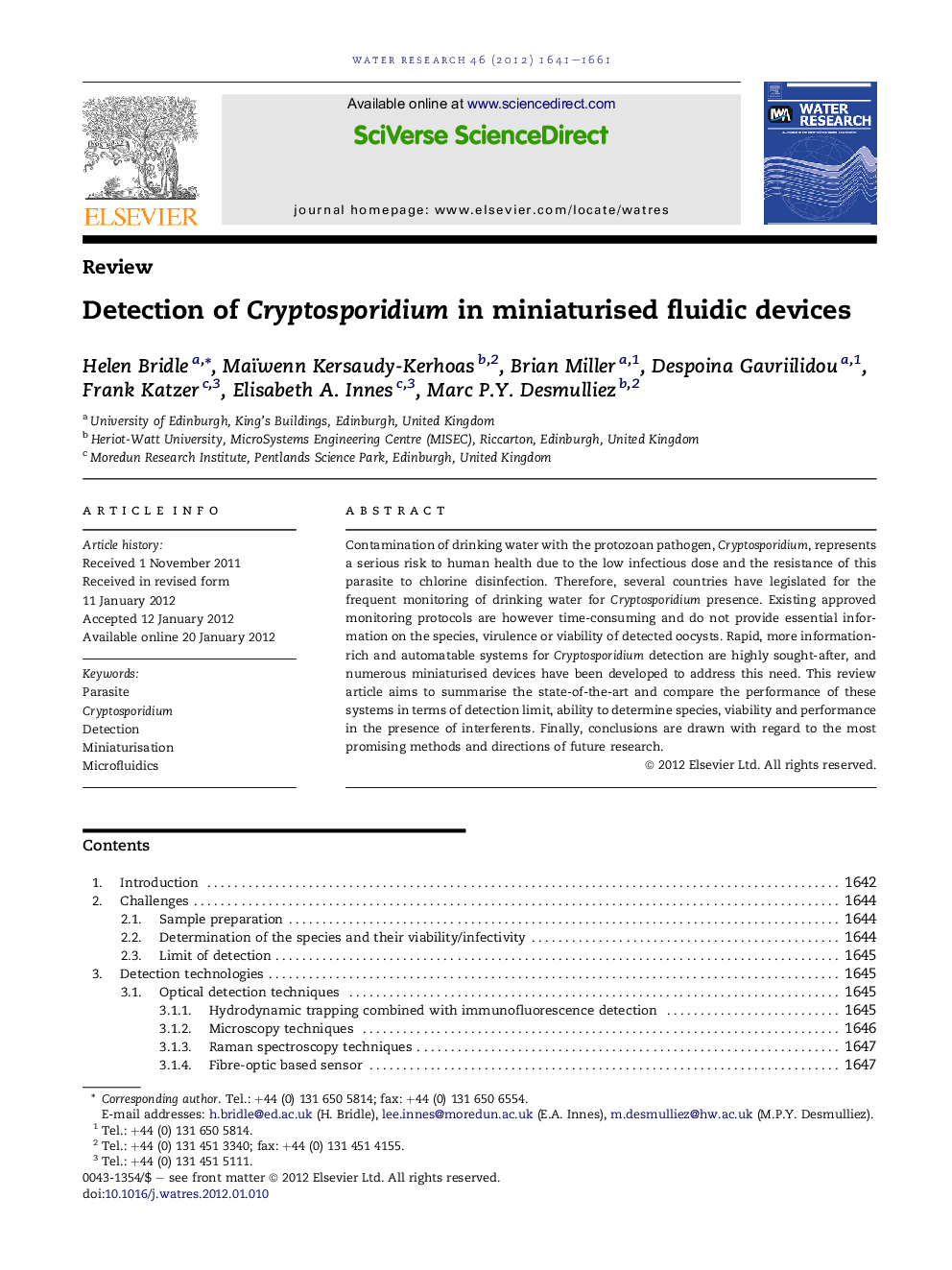| Article ID | Journal | Published Year | Pages | File Type |
|---|---|---|---|---|
| 4483464 | Water Research | 2012 | 21 Pages |
Contamination of drinking water with the protozoan pathogen, Cryptosporidium, represents a serious risk to human health due to the low infectious dose and the resistance of this parasite to chlorine disinfection. Therefore, several countries have legislated for the frequent monitoring of drinking water for Cryptosporidium presence. Existing approved monitoring protocols are however time-consuming and do not provide essential information on the species, virulence or viability of detected oocysts. Rapid, more information-rich and automatable systems for Cryptosporidium detection are highly sought-after, and numerous miniaturised devices have been developed to address this need. This review article aims to summarise the state-of-the-art and compare the performance of these systems in terms of detection limit, ability to determine species, viability and performance in the presence of interferents. Finally, conclusions are drawn with regard to the most promising methods and directions of future research.
► The performance of the systems in real water matrices have been poorly investigated. ► Sample preparation remains the real limitation as single oocyst detection was proved. ► Major challenge facing miniaturisation is the cost for adoption by water companies.
